
-
Find the right food for your petTake this quiz to see which food may be the best for your furry friend.Find the right food for your petTake this quiz to see which food may be the best for your furry friend.Featured products
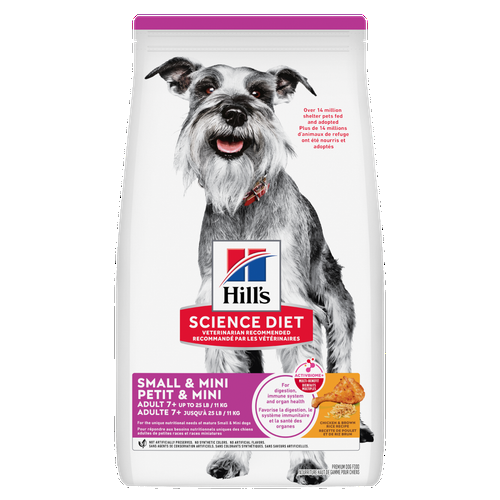 Adult 7+ Small & Mini Chicken & Brown Rice Recipe Dog Food
Adult 7+ Small & Mini Chicken & Brown Rice Recipe Dog FoodSupports energy level & luxurious coat in Small & Mini dogs. Helps keep immune system, heart & kidneys healthy.
Shop Now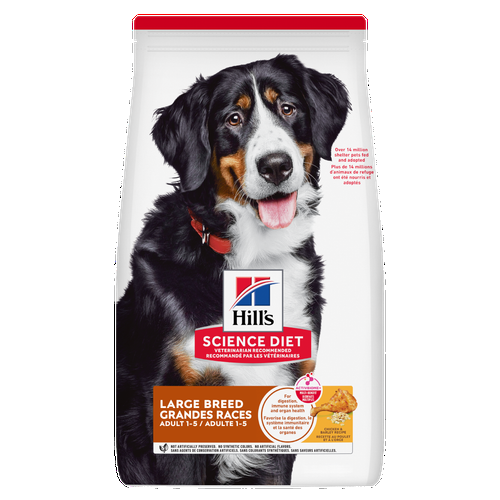 Adult Large Breed Chicken & Barley Recipe Dog Food
Adult Large Breed Chicken & Barley Recipe Dog FoodSupports healthy joints, immune system, digestion, lean muscle & beautiful coat
Shop Now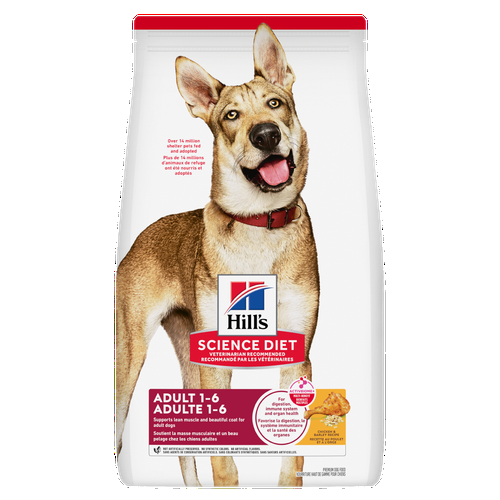 Adult Chicken & Barley Recipe Dog Food
Adult Chicken & Barley Recipe Dog FoodSupports healthy immune system, digestion, lean muscle & beautiful coat
Shop NowFeatured products Adult Perfect Digestion Salmon, Whole Oats, and Brown Rice Recipe Dog Food
Adult Perfect Digestion Salmon, Whole Oats, and Brown Rice Recipe Dog FoodScience Diet's breakthrough nutrition supports ultimate digestive well-being & healthy microbiome
Shop Now Adult 7+ Perfect Digestion Chicken, Barley & Whole Oats Recipe Cat Food
Adult 7+ Perfect Digestion Chicken, Barley & Whole Oats Recipe Cat FoodScience Diet's breakthrough nutrition supports ultimate digestive well-being & healthy microbiome for cats age 7+
Shop Now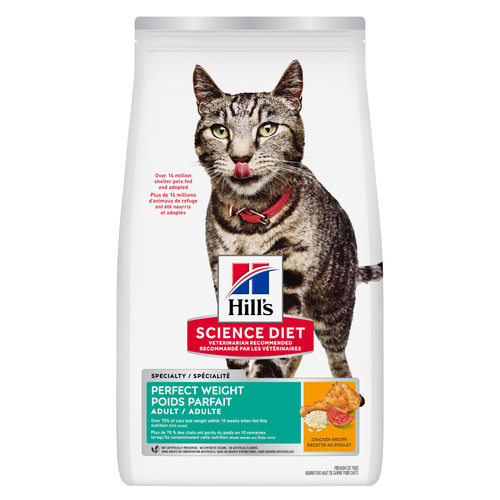 Adult Perfect Weight Chicken Recipe Cat Food
Adult Perfect Weight Chicken Recipe Cat FoodOver 70% of cats lost weight within 10 weeks when fed this nutrition (USA Study)
Shop Now -
Dog
- Dog Tips & Articles
-
Health Category
- Weight
- Food & Environmental Sensitivities
- Urinary
- Digestive
- Joint
- Kidney
- Dental
- Cancer
-
Life Stage
- Puppy Nutrition
- Adult Nutrition
- Senior Nutrition
Cat- Cat Tips & Articles
-
Health Category
- Weight
- Skin & Food Sensitivities
- Urinary
- Digestive
- Kidney
- Dental
- Stress
- Cancer
-
Life Stage
- Kitten Nutrition
- Adult Nutrition
Featured articles Compare Your Pet Food's Calories to Other Brands
Compare Your Pet Food's Calories to Other BrandsCompare Hill's Science Diet dog and cat food's calories against other pet food brands and AAFCO recommended maximum calorie count.
Read More Pet Food Storage Tips
Pet Food Storage TipsDiscover how and where to store your dry, as well as canned, dog and cat food. Learn how to find the "best before" dates on all Hill's pet food packaging.
Read More The Incredible Science Behind Your Pet's Microbiome
The Incredible Science Behind Your Pet's MicrobiomeLearn what a pet's microbiome is, how it contributes to your pet's gut & overall health, and why nutrition is important in maintaining healthy microbiomes.
Read More -


Whether out at the park or right in your living room, live and in-person or animated and on TV, the odds of you seeing a dog chasing their tail are pretty good. Sometimes it's a few enthusiastic loops in response to a seemingly exciting event; other times, it can look more like an endless cyclone, as the dog chases their tail over and over until they find a new distraction.
As a dog parent, you probably have some questions about this peculiar behavior, most specifically: why is your dog chasing their tail? Is it because they're bored, burning off extra energy, or is it for fun? Can dogs make themselves dizzy from chasing their tail?
Wonder no longer! We're diving into four common reasons why your dog may be so fascinated with their tail.
1. Boredom
Why is your dog chasing their tail? More likely than not, they may be lacking mental stimulation, looking for attention, or simply trying to burn excess energy. That's the case for lots of dogs — especially younger dogs and puppies. Often, these dogs find that running in circles is great fun!
For puppies who might not recognize their tail as part of their body yet, it can even be a source of fun. They see a fuzzy object in their periphery and assume it is another animal worth chasing. Running in circles doesn't appear to make dogs dizzy in the same way as humans, says Wag!, so they can keep going for quite a while.

2. A Medical Condition
If your dog chases their tail on occasion, that's totally normal. However, if this behavior is constant, it could signal a more serious issue. According to veterinarian Dr. Steve Weinberg, in an interview for the American Kennel Club, "Obsessive chasing could be due to a brain abnormality akin to seizure-like activity. Other reasons could be a painful area where a tail was docked, an infection or even cancer."
Some experts believe that tail chasing may even signal mental illness in dogs. As The Guardian reports, obsessive tail chasing is considered a symptom of canine compulsive disorder.
If left unchecked, this behavior can become self-destructive, resulting in dogs damaging their tails. If you believe your dog is obsessively chasing their tail, consult your vet.
3. Genetics
According to research published by the Journal of Small Animal Practice, there may be a connection between compulsive tail chasing and high blood and cholesterol levels. Researchers found that the 15 tail-chasing dogs they observed had significantly higher levels of total cholesterol and both high- and low-density lipoprotein cholesterol than the control dogs. More research needs to be conducted on the genetic link, but this was an interesting finding, nevertheless.
Keep in mind, there's a vast range of reasons why your dog is chasing their tail. If you two are getting outside for plenty of exercise and playtime together, but you still notice this behavior, you may want to keep an eye on it. If you observe your dog chasing their tail in obsessive, nonstop ways, you may want to hop over to the vet just to ensure there's nothing wrong.


Tasty Tips
4. Parasites
A dog that has an itchy tail from parasites such as fleas or ticks might be more likely to "chase" their tail in an effort chew on the itchy spot. While, dogs are more likely to sit down and try to contort their body in a way to reach the itchy spot, they may try chasing their tail at first. If you notice your dog trying to chew on their tail, you'll want to check for any signs of parasites and contact your vet about getting it looked at by an expert.
Is Tail Chasing More Common in Certain Breeds?
According to this article published on the National Center for Biotechnology Information, there is evidence that breeds such as German shepherds, Bull terriers and Anatolian sheepdogs are more likely to chase their tails. There is also indications that it is common in terrier breeds such as the West Highland white terrier and Jack Russell terriers, but there currently isn't enough statistical data to confirm.
Discouraging This Behavior
While chasing their tail may seem harmless and can provide great entertainment for both you and your dog, it's also important to monitor this behavior. If not for the conditions listed above, there is the risk of them actually catching their tail — specifically in younger dogs that are not as "tail-aware." There are many small bones in a dog's tail that can be damaged or broken if injury occurs. Additionally, if your dog does see their tail as prey, they might be inclined to chomp at it, which could result in a bite on their own tail. So, if you notice that they are close to catching their tail, you might want to consider discouraging this behavior to ensure they don't hurt themselves.


Erin Ollila believes in the power of words and how a message can inform—and even transform—its intended audience. Her writing can be found all over the internet and in print, and includes interviews, ghostwriting, blog posts, and creative nonfiction. Erin is a geek for SEO and all things social media. She graduated from Fairfield University with an M.F.A. in Creative Writing. Reach out to her on Twitter @ReinventingErin or learn more about her at http://erinollila.com.
Related products
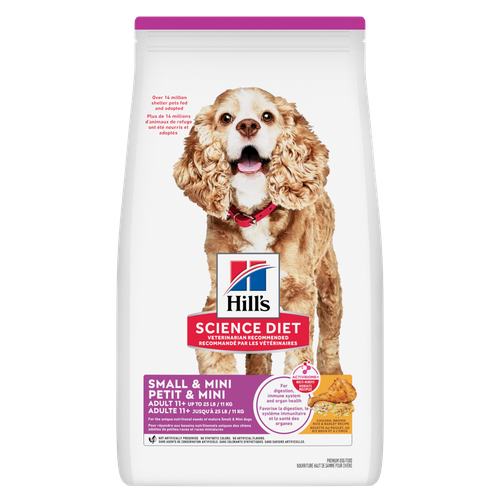
We make every bag of our dry dog food in our own US facilities with highest quality ingredients from North America, Europe and New Zealand. These ingredients must meet our strict requirements for purity and nutrient content, which exceed industry standards.
You can make a difference in the lives of shelter pets. With every purchase of Science Diet you help feed shelter pets globally - every day. In AUSTRALIA, since 1997, we have provided over 1.6M kg of Hill's pet food to LOCAL ANIMAL SHELTERS. Learn more at http://hillspet.com.au/shelters

Supports healthy joints, immune system, digestion, lean muscle & beautiful coat

Supports energy level & luxurious coat in Small & Mini dogs. Helps keep immune system, heart & kidneys healthy.

Supports healthy immune system, digestion, lean muscle & beautiful coat
Related articles

Gather the following puppy supplies to prepare your family for all the fun (and commitment) that comes with being a dog parent.

Discover fun and engaging games and other ways to help your dog exercise, keeping him happy and healthy.

Proper nutrition for your pregnant or nursing dog is vital to her and her puppy's health. Learn what you should do provide her with the proper nutrients.

Learn how to stop your dog from begging at the dinner table, and understand how it can help contribute to his health.

Put your dog on a diet without them knowing
Our low calorie formula helps you control your dog's weight. It's packed with high-quality protein for building lean muscles, and made with purposeful ingredients for a flavorful, nutritious meal. Clinically proven antioxidants, Vitamin C+E, help promote a healthy immune system.
Put your dog on a diet without them knowing
Our low calorie formula helps you control your dog's weight. It's packed with high-quality protein for building lean muscles, and made with purposeful ingredients for a flavorful, nutritious meal. Clinically proven antioxidants, Vitamin C+E, help promote a healthy immune system.

